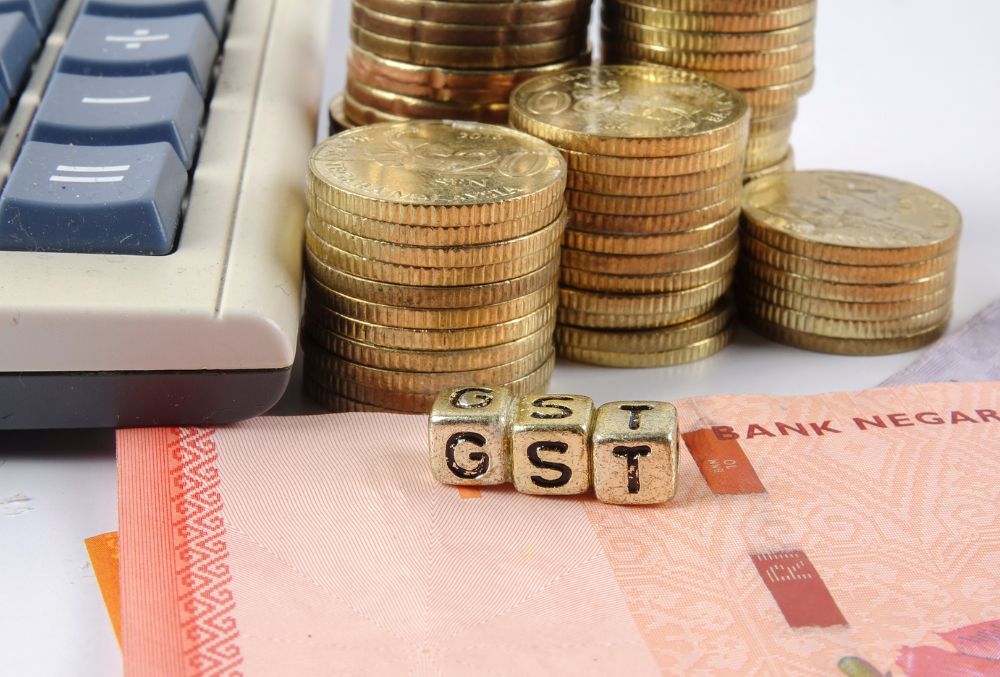In the complex world of taxation, two primary types of taxes frequently dominate discussions and debates—Goods and Services Tax (GST) and Income Tax. These two types of taxes are integral components of the broader fiscal framework and are essential for the proper functioning of the Indian economy. While both GST and Income Tax contribute significantly to government revenue, they serve different purposes and are governed by distinct filing systems that reflect their roles. Understanding these fundamental differences is essential for all taxpayers, whether they are individual earners or large corporations, as it is essential for ensuring compliance with the respective tax laws. Having a good understanding of these differences can help taxpayers follow regulations and improve their tax processes. This can lead to more efficient tax planning and management. Ultimately, this understanding empowers taxpayers to navigate the complexities of the tax landscape with greater confidence and efficacy.
1. Purpose and Scope
What is GST (Goods and Services Tax)?
Goods and Services Tax (GST) is a comprehensive indirect tax applied to the supply of goods and services in India. Implemented on July 1, 2017, GST replaced numerous indirect taxes like central excise duty, service tax, and value-added tax (VAT). GST is collected at every stage of value addition, and the burden ultimately falls on the end consumer. It is applicable across the country with the same rates for similar goods and services. This system aims to streamline the taxation process and promote fair and equal taxation across all states and regions in India.
Main Features of GST
1. Multi-layered Tax Structure: GST is divided into three components: CGST (Central GST), SGST (State GST), and IGST (Integrated GST). CGST and SGST apply to intra-state supplies, while IGST applies to inter-state supplies.
2. Input Tax Credit: GST allows businesses to claim input tax credit on the taxes paid for items purchased for business use, reducing the overall tax burden.
3. Threshold Limits: Small businesses with an annual turnover below a specific threshold benefit from simplified compliance under the composition scheme.
What is Income Tax?
Income Tax is a direct tax levied on the income of individuals and entities in India. The Income Tax Act of 1961 regulates income tax. It is calculated based on the total income earned during a financial year, which includes salaries, business profits, dividends, capital gains, and other sources. The tax rates and slabs differ based on the income level and type of taxpayer (individual, company, partnership firm, etc.). Unlike GST, which is indirect, income tax is directly deducted from the taxpayer’s income.
Key Components of Income Tax
1. Tax Slabs and Rates: Individuals are taxed based on a system of tax slabs, where different rates apply to various income bands. Corporations also have their tax rates, subject to specific exemptions and deductions.
2. Deductions and Exemptions: Taxpayers can claim deductions under sections like 80C, 80D, and other relevant sections to reduce their taxable income.
3. Filing Requirements: All taxpayers are required to file annual income tax returns (ITRs) based on their income levels and sources.
Key Differences Between GST and Income Tax
| Feature | GST | Income Tax |
|---|---|---|
| Tax Type | Indirect Tax | Direct Tax |
| Coverage | Applies to goods and services | Applies to income from various sources |
| Collection | Collected at different stages across the supply chain | Collected at the end of the financial year |
| Filing Frequency | Monthly/Quarterly (GST Returns) | Annually (Income Tax Return) |
| Input Tax Credit | Available for goods/services bought | Not applicable |
| Tax Slabs | Not applicable, fixed rates | Progressive tax slabs apply |

2. Calculation and Taxable Amount
GST Calculation
Goods and Services Tax (GST) is calculated as a percentage of the transaction value of the goods and services being provided. The rates at which GST is applied vary depending on the specific type of goods or services involved, and these rates are categorized as 5%, 12%, 18%, and 28%. Businesses need to note that they can claim an input tax credit (ITC) on the GST they have paid on their purchases, which effectively reduces their overall tax liability. This mechanism allows businesses to offset the tax they have already paid against the tax they need to collect from their customers, promoting fairness and efficiency in the taxation system.
The formula for GST calculation can be articulated as follows: GST Amount = Transaction Value × GST Rate.
Income Tax Calculation
On the other hand, income tax is calculated on the net taxable income of an individual or entity. This net taxable income is determined by taking the gross total income and subtracting any applicable deductions and exemptions that are available under the Income Tax Act. The total tax payable is subsequently determined based on the applicable slab rates for the specific financial year, which can vary from one year to another depending on the government’s budgetary provisions. Understanding these slab rates is essential for accurate tax planning.
The formula for income tax calculation can be expressed as Income Tax = (Gross Total Income – Deductions) × Applicable Tax Rate.
3. Forms for Filing
GST Filing Forms
GST returns must be filed using specific forms, depending on the type of taxpayer
- GSTR-1: GSTR-1 is specifically used for reporting outward supplies made by a business, detailing the sales transactions that have occurred during the reporting period.
- GSTR-3B: GSTR-3B serves as a summary of the monthly returns, providing a consolidated view of the GST liabilities.
- GSTR-9: To ensure compliance for the entire financial year, GSTR-9 is required as the annual return, which summarizes all GST transactions over the year.
- GSTR-4: For businesses opting for the composition scheme, GSTR-4 is applicable and is filed quarterly, allowing for a simplified reporting process for smaller entities.
Income Tax Filing Forms
Income tax returns (ITR) have different forms for various categories of taxpayers
- ITR-1 (Sahaj): ITR-1, also known as Sahaj, is designed for salaried individuals whose income does not exceed ₹50 lakhs in a given financial year.
- ITR-3: ITR-3 is intended for individuals and Hindu Undivided Families (HUFs) who derive income from a proprietary business or from a profession.
- ITR-6: Companies, excluding those that qualify for an exemption under Section 11, utilize ITR-6 for their tax filings.
- ITR-7: ITR-7 is reserved for certain categories of persons, including companies, that are obligated to furnish returns under specific sections such as 139(4A) or 139(4D) of the Income Tax Act.
Each of these forms is essential for ensuring that taxpayers accurately report their income and fulfill their tax obligations in compliance with the law.

4. Compliance and Penalties
GST Compliance
GST compliance necessitates that businesses maintain meticulous and detailed records of all transactions, which includes keeping track of every sale made, every purchase incurred, as well as documenting input tax credits and output tax obligations. This thorough record-keeping is essential not only for accurate reporting but also to ensure that businesses can substantiate their claims and calculations when filing their GST returns. Failure to adhere to these compliance requirements can lead to various consequences, including penalties imposed for non-compliance, the accrual of interest on overdue payments, and, in severe cases, even the cancellation of the business’s GST registration. Such repercussions can have significant negative implications for a business’s operations and financial health, highlighting the importance of diligent GST compliance practices.
Penalties
- Late filing: ₹50 per day for non-filing of GSTR-3B, and ₹20 per day for nil return filers.
- Non-payment or short payment of GST: Penalty of 10% of the tax amount, subject to a minimum of ₹10,000.
Income Tax Compliance
Compliance with tax regulations involves several critical components, including the timely payment of advance tax, the filing of TDS (Tax Deducted at Source) returns, and the accurate reporting of all sources of income. It is essential for taxpayers to ensure that they meet these obligations within the specified deadlines to avoid any potential issues. Failing to comply with these important requirements can lead to a range of adverse consequences, including the imposition of interest charges on late payments, the assessment of penalties for non-compliance, and in more serious cases, the possibility of prosecution for tax evasion or other violations. Such repercussions can have significant implications for an individual’s or business’s financial standing and legal status, underscoring the importance of adhering to these tax compliance measures.
Penalties
- Late filing: ₹5,000 if filed after the due date but before December 31, and ₹10,000 if filed after December 31.
- Underreporting of income: 50% of the tax payable on underreported income.
5. Filing Frequency
GST Filing Frequency
GST returns are typically required to be filed on a monthly or quarterly basis, and this frequency largely depends on the overall turnover of the business in question. Smaller businesses with lower turnover may have the option to file their GST returns quarterly, while larger enterprises or those with higher turnover generally need to submit their returns on a monthly schedule. In addition to these periodic filings, it is also important to note that an annual return is mandatory for all GST-registered businesses. This annual return serves to provide a comprehensive summary of the entire year’s GST transactions, ensuring that all tax obligations are fully met and accounted for.
Income Tax Filing Frequency
Income tax returns are required to be filed on an annual basis, and the typical due date for most individual taxpayers is usually set for July 31st of the assessment year. This timeline ensures that individuals have sufficient time to gather their financial documents and accurately report their income and deductions for the previous financial year. However, for certain specific categories of taxpayers, such as companies, as well as those involved in tax audit cases and some other designated groups, the due date is extended, falling on either October 31st or November 30th. This additional time is provided to accommodate the more complex financial reporting requirements that these entities often face, allowing them to fulfill their obligations correctly and comprehensively.
Understanding the differences between GST and Income Tax is vital for individuals and businesses to navigate their financial obligations efficiently. Both taxes serve distinct purposes in the Indian economy, and compliance with their respective filing systems is crucial for avoiding penalties and legal issues. For business owners, leveraging the input tax credits under GST can significantly reduce tax liability, while individuals can make use of allowable deductions to manage their income tax obligations. With this comprehensive guide, you are better equipped to understand and manage your tax responsibilities in India effectively.











